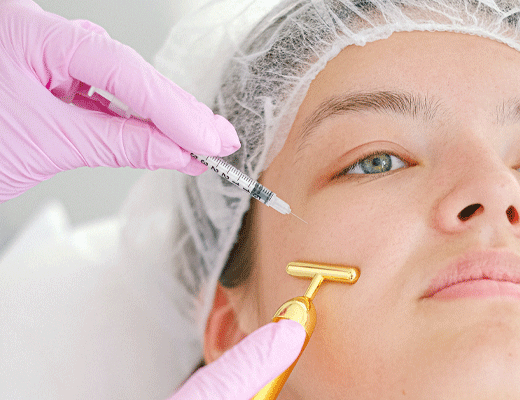Services
Our practice can provide a wide range of dental services. This allows you the save time and keeps many aspects concerning your total dental care in our facility. Our emphasis is on total preventive care for our patients. This begins with hygiene visits, regular check-ups, and continued oral health routines. Our practice also provides high quality services for restoring mouths that have been damaged by dental disease, injury, and common problems that require routine and cosmetic dental procedures. Our primary goal for our patients is to achieve and maintain optimum oral health through advances in techniques, technologies, patient education, and routine scheduled dental exams. We also have relationships with multiple dental specialists should your particular treatment require specialty care. Please see our offered services below to see how we can provide you with treatment to improve and maintain your dental health.
General Dentistry
General dentistry is the cornerstone of oral healthcare, encompassing a wide range of preventive, diagnostic, and therapeutic services designed to maintain optimal oral health for individuals of all ages. General dentists are trained to address a broad spectrum of dental concerns, from routine cleanings and examinations to more complex restorative procedures and cosmetic treatments.
CEREC One Day Crowns
CEREC is a state of the art and modern technology that allows us to make you a crown in one appointment without having to take an impression, make and place a temporary crown, and ask you to take off of work for another appointment two weeks later for delivery of your crown. It allows us to provide beautiful, esthetic crowns that blend in perfectly with the rest of your teeth and function just like a tooth – usually in just ONE appointment!
Botox
For improvement of both moderate to severe frown lines between the brows and crow’s feet, we provide a cosmetic treatment of injectable Botox® Cosmetic. This treatment temporarily reduces the appearance of the lines present between the brows and crow’s feet. The treatment usually lasts around three months and needs to be repeated for the effects of treatment to be continued.
Dermal Fillers
For severe wrinkle lines, folds and areas of unpleasing indentations, we provide dermal filler treatment. The product that we primarily use is Juvederm. Juvederm is a family of injectable hyaluronic acid dermal fillers manufactured by Allergan that is used to provide 9 months to one year of correction for moderate to severe facial wrinkles and folds, such as the nasolabial folds (lines from the nose to the corners of the mouth). It can also be used to enhance the shape and fullness of the upper and lower lips.
Veneers
Are you unhappy with shape, color, or alignment of your teeth? Do you have gaps between your teeth? If you answered yes to any of the questions, then veneers may be a suitable way to enhance the appearance of your teeth.
What are veneers?
Veneers are thin porcelain facings (about the thickness of your finger nail) that are bonded to the front side of your front teeth to give them cosmetic enhancements. Veneers can have an immediate improvement of the way your smile looks and could be just the treatment option that is needed to give your smile a makeover. Are veneers the right choice for you? Call us at 251-342-0015 to make an appointment to schedule an exam.
What are the steps involved in getting veneers?
First Appointment:
1. Consult that includes complete examination and evaluation of your teeth and smile.
2. A conversation with our doctors that allows you to address the concerns you have with your teeth and smile.
3. Explanation of suggested treatment options that are available to treat your teeth properly.
4. Upper and lower impressions will be taken along with photos to properly study so that we can construct very precise dental veneers for you.
Second Appointment:
1. Teeth are prepared for veneers.
2. Impressions are taken.
3. Temporary veneers are fabricated and cemented with temporary cement.
Third Appointment:
1. Permanent veneers are fitted and adjusted.
2. Veneers are cemented into place.
3. Final photographs are taken.
Veneers last for a very long time if they are cared for properly and will provide both beautiful and natural feeling enhancements to you smile.
Dentures and Partial Dentures
For patients that are missing teeth, we also provide removable options to help replace their teeth. This can be accomplished with either a denture or partial denture.
Dentures and Partial Dentures are a replacement for missing teeth that can be removed and put back into the mouth as the patient desires. Each case is different and a patient might receive full or partial dentures. A full denture is used when all of the natural teeth are no longer present and a partial denture is used when some of the natural teeth are present and can serve as an attachment for the partial denture.
There are two types of full dentures:
Conventional Full Dentures and Immediate Full Dentures
Conventional Full Dentures: This treatment is provided when either the patient has no teeth present or all of the teeth are removed and the patient undergoes a healing process of a couple months with no teeth. This allows the gum and bone to heal after extractions so that an accurate impression can be made and the denture will have a better fit.
Immediate Full Dentures: This treatment is provided when the patient has natural teeth present that are not restorable and must have them extracted. Prior to the patient having their teeth extracted, the dentist takes measurements and has dentures fitted for your mouth will be like after the teeth are removed. After removing the teeth, the fabricated immediate dentures are placed in your mouth. This allows a patient to leave with a full set of teeth after having their natural teeth extracted. However, you will need to have a follow up visit to refit the immediate dentures because the gums and bone will change as the areas of the tooth extractions heal. The immediate dentures will often have to be “re-lined” to help them better fit to the healed gums and bone. Sometimes, patient will have to have a new set of conventional full dentures fabricated after a year or two depending on how much the gums and bone change.
Partial Dentures
Partial dentures are a treatment option when only certain teeth need to be removed or you are already missing just a few teeth. This type of treatment is similar to a bridge but it is not permanently cemented in your mouth and it is removable.
Dentures
Dentures take time to get used to wearing. You must wear them to get used to them. It is a good idea to practice speaking with them as much as possible to try to eat with them as much as possible. Some patients say that the gum colored base of their dentures feels too big or bulky to them and that the dentures cause them not to have enough room for their tongue. Some patients also say that their dentures feel loose and that it affects their speech. The more that you practice speaking and eating with the denture, the more that your mouth will become used to the denture being there and the dentures will become to feel more natural to you. A denture may never feel exactly like your natural teeth, but it is much better than not having any teeth at all. If your denture always feels loose to you then dental implants are an option that will allow your denture to securely fasten to and will minimize the movement of the denture while you chew and speak.
Dentures must be cared for and cleaned regularly, just like natural teeth. They should be brushed with your denture brush without toothpaste. You can use a liquid type antibacterial soap such as hand soap or dish washing liquid if you wish. Toothpaste is abrasive and will cause the denture to lose its shine. Always remove your denture before you sleep and soak it in a denture solution – NEVER allow your denture to dry out as it can affect the fit and cause it to become brittle. Do not soak your dentures in bleach as this can bleach the pink colored gum areas to turn white. Always be careful when handling your dentures as they can break if you drop them and sometimes cannot be repaired. Never adjust your dentures yourself; you can damage them beyond repair. Always contact your dentist if you have any questions concerning the care or fit of your dentures.
Oral Conscious Sedation and Nitrous Oxide
If you have severe anxiety concerning your dental appointments, we offer oral conscious sedation and nitrous oxide to help you be comfortable during your appointments.
Oral Conscious Sedation
For oral conscious sedation, prescription medicine is prescribed for the patient to take usually an hour before the appointment. The patient must have a driver bring them to and from the appointment due to the drowsiness effects of the sedation medications. The medicines will help sedate patients during treatment offering them comfort from their anxiety.
During treatment, the patient is constantly monitored for proper breathing, blood pressure, and heart rate. The patient is also administered oxygen sometimes with a combination of nitrous oxide during treatment.
Nitrous Oxide
Nitrous oxide also helps with anxiety but does not offer sedation levels like that of oral conscious sedation – it offers a much lighter sedation effect. It is commonly referred to as “happy gas” or “laughing gas”. It is administered via tubing connected to a nasal hood (a piece that comfortably rests on your nose) during treatment.
Splints for TMJ and Bruxism
TMJ and Bruxism
For patients with TMJ issues and those that have bruxism (grinding of teeth) and clenching, we provide treatment via removable splints. A splint is a mouth guard type of appliance that fits over your teeth and helps keep your teeth from touching. This allows your muscles in the orofacial region to rest, places the TMJ in a favorable position, and also protects the patient’s teeth from touching if the patient begins to grind the teeth together. Usually a splint is worn during sleep because most patients brux (grind their teeth) and clench at night. The repeated patterns of clenching and bruxing can cause TMJ issues, orofacial pain, and tooth pain and sensitivity.
Splint Therapy
Splint therapy can also be combined with the administration of Botox® into the masseter and temporalis muscles. This helps to relax these muscles even more than just splint therapy and help to improve any orofacial pain that the patient may be experiencing to due to severe clenching, bruxism, and TMJ issues.
Six Month Smiles
Six Month Smiles is a cosmetic braces treatment that is suitable for adults wanting to correct misaligned or rotated teeth in the anterior (front) region of the mouth. The brackets are clear and tooth colored orthodontic wire is used so that the braces are minimally noticeable. After treatment is complete, the patient will be provided with permanent lingual (back side of teeth) retainers that are bonded to the teeth.
Treatment times can range from 4-9 months, but usually average around 6 months. This type of orthodontic treatment does not focus on moving the posterior teeth thus patients must have a stable occlusion (relationship of how the teeth meet) in the posterior region of the mouth. For patients that are not candidates, traditional comprehensive orthodontic treatment is recommended and a referral to an orthodontist will be provided. Please contact our office today to schedule a consultation appointment to see if you are a candidate for Six Month Smiles.
Restoration of Dental Implants
Patients that are missing teeth, have several options to replace them. One of the options to replace them is a dental implant. There has been much advancement in dental implants and the procedures have become routine treatments.
Patients are referred to a specialist to have the implant placed. The implant then needs to heal usually 4-6 months. At this time the implant can be restored with a crown.
The crown that is placed on top of a dental implant is fabricated via a model that is produced from an impression or a digital scan by our CEREC machine.
Hygiene/Periodontal Health/Deep Cleaning
Hygiene
Regular teeth cleanings are important to maintain proper oral health. These appointments also offer the dentist an opportunity to examine your teeth and inspect prior dental work and to see if you have any new cavities. It is recommended that you see your dental hygienist and dentist every six months for a cleaning and exam.
Periodontal Therapy
Gum disease, also known as periodontal disease, isn’t just about swollen gums and bad breath. This chronic inflammatory condition, if left untreated, can lead to tooth loss, bone damage, and even systemic health problems.
Understanding Periodontal Disease
Periodontal disease thrives in bacterial plaque and tartar. These sticky deposits build up around teeth and irritate gums, triggering inflammation. As it advances, gum pockets deepen, creating breeding grounds for bacteria, further escalating.
Treatment
Early Intervention: In the early stage, called gingivitis, prompt action is key. Brushing, flossing religiously, and regular dental cleanings can halt the advancement and even reverse some damage.
Scaling and Root Planing: This deep cleaning involves meticulous removal of plaque and tartar, both above and below the gum line.
Medications: In some cases, your dentist may prescribe antibiotics to eliminate stubborn bacterial pockets.
Deep Cleaning
Sometimes, patients accumulate build-up (calculus) below the gums causing inflammation to gum tissue, which can result in bone loss around the surrounding teeth. This is known as periodontal disease and these areas must be “deep cleaned” in order to keep the disease from getting worse. Deep cleanings are performed under local anesthesia and allow the hygienist to clean the calculus that is causing the inflammation off of the teeth. Patients that undergo deep cleaning are usually placed on a 3-month cleaning program to monitor the status of their periodontal disease and to keep calculus build up off of the teeth.
Tooth Colored Fillings/Composite Bonding
Tooth Colored Fillings
When a tooth needs a filling, we use composite fillings to replace the missing tooth structure caused from the decay. A composite filling is tooth colored and blends in with the remaining tooth structure left so that the filling is not noticeable like amalgam “silver” fillings.
After the tooth surface is prepared to receive a filling, an adhesive is placed into the cavity and cured with an ultraviolet light. The filling material is then placed and sculpted and then light cured with an ultraviolet light again. The filling is then contoured and polished so that it resembles what the tooth previously looked like and fits together with your other teeth when you bite together and chew.
Composite Bonding
Bonding is a common solution for:
- Fixing or repairing chipped or cracked teeth.
- Reducing unsightly gaps or spaces between teeth.
- Hiding discoloration or faded areas on the tooth’s surface.
- Often used to improve the appearance of your teeth and enhance your smile. As the name indicates, composite material, either a plastic or resin, is bonded to an existing tooth. Unlike veneers or crowns, composite bonding removes little, if any, of the original tooth.
Composite bonding has many advantages:
It is a quick process, which typically lasts less than one hour.
It does not reduce the tooth’s original structure and is relatively inexpensive.
Composite resins come in many different shades and provide better matching of shades to the natural color of your teeth.
Composite bonding, however, is not as durable and long lasting as veneers and crowns and may need to be re-touched or replaced in the future.
Composite bonding stains more easily and therefore require proper care and regular cleaning. In order to ensure the longest possible duration of the bonding, composites should be brushed and flossed daily. Common staining elements include coffee, tea, tobacco, foods and candy.
Dental Implants
A dental implant is used to replace a missing tooth or multiple teeth. There are a variety of ways to use implants to restore missing teeth but they can range from one implant with a single crown to multiple implants supporting a bridge or even a full denture. The dental implant process can take several months (3-6) and sometimes even longer depending on if additional surgical procedures are needed to prepare the sites receiving the implants.
Dental implants can offer a patient added security and peace of mind when it comes to replacing a lost tooth or teeth with a prosthesis because of their support and stability as well. Call our office today if you are interested in hearing more about dental implants and scheduling an appointment for a consult to see if you are a candidate for dental implants.
Zoom! Whitening
Zoom! Whitening is an in-office bleaching procedure that allows you to whiten your teeth 6-10 shades lighter in just about an hour. Custom at-home whitening trays are given to you at the end of your appointment for you to bleach at home to maintain the shade of your lightened teeth.
Sensitivity can occur after whitening an instructions along with topical agents will be supplied to you at the end of your appointment along with instructions on how to use sensitivity toothpaste. If you would like to learn how an in-office whitening treatment can brighten your smile, please contact our office for more information.
At-Home Whitening Trays
At home whitening trays can provide a benefit to patients who would like to bleach their teeth in the comfort of their home. This option does not whiten your teeth as quickly as an in-office treatment, but over time, it can lighten your teeth to a shade that is suitable to your liking.
We have several different bleach concentrations that you can choose from and this can be especially helpful for patients who would like to whiten their teeth but have extreme sensitivity. By varying the bleach concentrations, we can keep sensitivity to a minimum. While decreasing the concentration of the bleach will help with sensitivity, it can take you longer to achieve the whitening results that you desire. If you would like to learn more about at-home whitening, please contact our office for more information.
Bridges
Are you missing a tooth and not a candidate for a dental implant? Well you can still have a tooth replaced, in most cases, with a fixed partial denture (Bridge). A bridge replaces a missing tooth, and is cemented onto two or more other teeth for strength and the convenience of not having to wear a removable appliance.
A bridge can be a wonderful treatment option to replace a missing tooth when a dental implant is not an option, but bridges can fail if proper instructed oral hygiene techniques are not followed and the patient does not continue to receive regular dental care and exams. We would love to talk to you about all of your options to replace your missing tooth and inform you of the risks and benefits of each treatment. Contact our office today for more information.
Root Canals (Endodontics)
Root canals are needed when decay approaches and enters and infects the root canal system. The bacteria that cause the decay process enter into the root canal system and infect this otherwise sterile environment. The reaction to the bacteria causes inflammation which then causes the tissue present in the root canal system to become necrotic (die). This process can be very painful and cause fever, redness, and swelling.
Swelling can be very serious and needs to be evaluated by a medical or dental professional. The necrotic tissue in the root canal system must be removed and the canals disinfected and sealed with a special filling material. Removing the necrotic tissue from the canals and disinfecting them allows the body’s immune system to then thoroughly clean up any remaining infection at the root of the tooth and the area to heal. It is very important to receive a crown on your tooth within one month of having your root canal to protect the tooth, give it strength, and give it a permanent seal.
If you currently have a tooth that is temperature sensitive, especially to heat, causes pain when biting, or gives you a constant throbbing pain, you could need a root canal. It is best to see a dental professional if you have any of these systems so that the proper treatment and diagnosis can be determined for your tooth. Please call our office today if you have questions about root canal therapy or have a tooth that is causing you pain.
Oral Surgery
Our office provides oral surgery services to our patients who need to have teeth extracted. We perform all types of extractions and can incorporate the use of inhaled nitrous oxide and oral conscious sedation to help with any anxiety issues that you may have due to having an oral surgery procedure performed. While we try to accommodate as much of your treatment in office as possible, there are times where it is recommended for our patients to see one of our local oral surgeons to receive treatment.
Following oral surgery procedures, you can expect temporary discomfort as with any surgical procedure. Proper medications and instructions will be provided to you to help you remain as comfortable as possible. Soft foods are also recommended the first few days after surgery so that you are not uncomfortable while trying to chew denser foods.
It is important to keep your extraction site as clean as possible and not to drink through a straw during the healing process. If you have sutures in place, they will usually come out on their own and you do not have to have them removed, but this depends on the type of suture that the surgeon places. It is also very important for you to follow all of the post-operative instructions that your doctor gives you concerning the care for your extraction site.




















